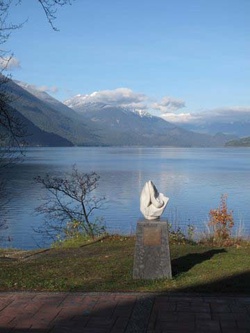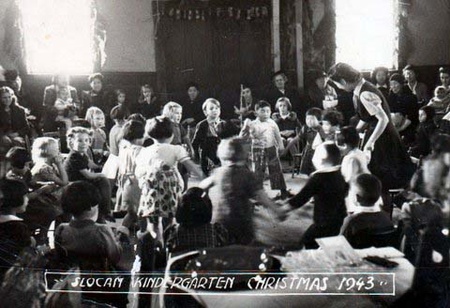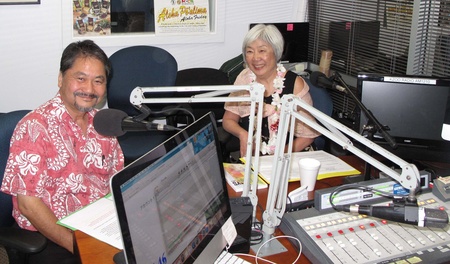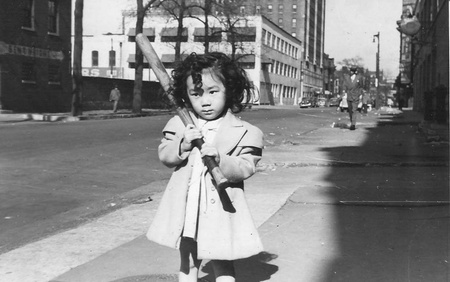As you were in Chicago during the tumultuous times of the Civil Rights movement in the US, did you feel any commonality with the causes that Black Americans were and continue to fight for?
A society that has practiced and continues to practice racism and genocide is not in a current state of health. Anyone who participates in such a society is by the very fact of that membership an unhealthy person. An admission of wrongdoing indicates an awareness of social responsibility to the victim, but if a society continues to discriminate against indigenous people, Japanese Latin Americans, LGBTs, immigrants, people of colour, and women, there remains a great deal of work to make that society, that nation, just and healthy.
As Martin Luther King says "...there are some things in the world, to which I am proud to be maladjusted and to which I call upon all men of goodwill to be maladjusted until the good society is realized..."
It behooves all sensitive and responsible people to remain focussed on developing an inclusive narrative in the country where they live. And of course, this includes learning about their history––the real history, the history all too often hidden from us.
The first time I met a black person was in our home, strange as that may seem. He was a friend of my brother Junior. My father treated George like anyone else that would have entered our midst, with the exception that he couldn’t speak Japanese to him. Nothing was said about George after he left.
At Ogden School, there were two black children that I remember most. Earle Lee Jones, who voluntarily served as my guardian angel on the recess playground, when another child took issue with something I said. And another child, who graduated with me and was forced, by virtue of where he lived, to go to Waller High School instead of the ‘good’ high schools that the more privileged children were permitted to attend.
There were no interracial couples at Wells High School. I remember the black students who attended our senior prom took black students as their dates. White students dated white students, although I dated both white and Japanese American boys. I grew up understanding that there were people in my family who were prejudiced against blacks, and I often found myself pointing out their bias to them, which did nothing to endear me to my relatives.
My favorite music was and still is to a great extent black. I remember being very upset when the Beatles showed up and took away the royalties that the black musicians were enjoying up until their arrival. If I listen to Beatles’ music, I listen to the cover sung by other performers.
I am very happy to tell everyone I know that we have an African American in our family. My nephew, Mark Morita, and his wife adopted Jackson, who is a beautiful addition to our growing, mixed- race family. I also have a niece and nephew who are part Dominican and two nephews whose mother is Thai. As well, there are several happa nieces and nephews whose ancestors came to America from Ireland.
My husband helped integrate Atlanta, Georgia when he was a member of the Student Nonviolent Coordinating Committee and took part in a hunger strike after he was placed in solitary confinement. His story is available on the reading list at the San Francisco State University social work graduate course, Ethnic and Cultural Concepts and Principles I.
I demonstrated against the Vietnam War in Chicago and was horrified to witness the assassinations of MLK, Robert Kennedy, and Malcolm X on TV when we were living in Toronto. I have read the works of many black writers and feel great empathy for their continuing struggle to achieve equality in America and in Canada. I was particularly surprised to see black rural ghettos as my husband and I traveled through Nova Scotia and to hear of their cruel dispersal from Africville. Black people have made significant contributions to our culture and yet, they are still treated unfairly. I was upset to hear Robert Scheer report online that black and brown people lost 70 percent of their wealth during the Great Recession of 2007.
In regards to the above comment about ‘the real history’, what role does the ‘model minority’ myth that JC/JAs have been labelled with play into this?
I do not consider myself a “model” anything, an exemplar of any virtue. Nikkei exhibit unhealthy traits, like everyone else does. The difference maybe that we tend to hide them from the public. When you hide your failings, you become less accessible, less sympathetic, I think. Establishing a special class of minorities is unequitable and distorts history. The phrase, by its very nature, calls into question why we are being singled out. It is true that Mike Masaoka put the Japanese Americans under a cruel spotlight when he argued, “Let us prove our loyalty.” But our achievements may belittle the important contributions of other minority groups to Canada and the United States by making us seem more attractive—which is another form of discrimination. It’s like a parent saying, “Johnny made his bed before he came down for breakfast; why didn’t you?” Just because Johnny made his bed doesn’t make him inherently better than any one of his siblings. It just makes him easier to control.
How have your presentation both here and in the US been received?
My presentations on the Nikkei Diaspora during World War II have been very well-received throughout the Kootenay: in Slocan, Nakusp, Kaslo, Nelson, Castlegar. Many people are surprised at the scope and magnitude of the Nikkei diaspora that took place during World War II. These important stories have been withheld from our history books. Many people have wept over my disclosures. Many members of my audiences come up and thank me at the end of my talks. A small minority, attempt to rebut by asking questions, like “Do you feel sorry about what the Emperor did during the war?”
But for the most part, I find people yearn to make your story their own. People who read Sideways and attend my presentations tell me that they feel like misfits too and go on to share their stories, which I then incorporate into my presentations.
These local stories help people to see that when one person suffers the entire community is wounded. For instance, my neighbor Mitzi Hufty, who was a childhood friend of Joy Kogawa, tells my audiences that she was upset to find that her friend Joy couldn’t attend school with her in the Slocan, even though Joy lived in the house behind hers. Instead, Joy was forced to go to school in Lemon Creek along with all the other detained Nikkei. Yet, a boy of German ancestry sat in class next to Mitzi.
One Nikkei in Nelson told me, “We have to move on” when he refused my invitation to participate as a reader in one of my presentations. My answer to him now is that for many, like my brother-in-law, Art Shibayama, who was born in Lima, Peru and was denied the apology and redress he sought from the American government, the struggle is not over, and we cannot truly move on until we give fair treatment to those who continue to be marginalized in our society.
According to my brother, Claude, there are Japanese American citizens living in Japan who don’t know they were used in the hostage exchanges between America and Japan during the war. I assume that might also be true of Japanese Canadian children who were forced to give up their citizenship by the Canadian government when they were deported to Japan in 1945.
Is the Internment story a finished one?
I know many Nikkei in Canada who don’t have any idea of the suffering their parents and grandparents endured. Internees and non-internees need to know about what happened in Canada during the war.
The reception I received in Honolulu from the Nikkei community was as welcoming and heartwarming as the reception I received in Toronto, with the exception that the audience was more diverse in Hawaii. There were Chinese people, two Middle Easterners, and a black woman in attendance. I was overwhelmed by the hospitality and generosity of the volunteers who donated their time to make my launches in both those cities as successful as they were.
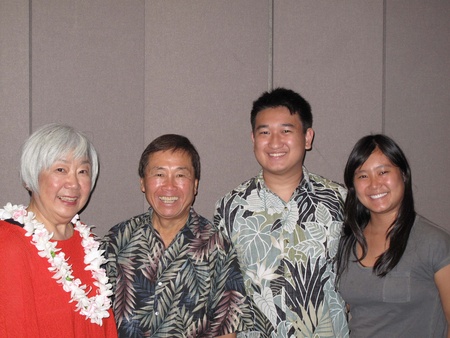
I am indebted to Dr. Dennis Ogawa, a recipient of the Order of the Rising Sun from the Emperor of Japan, for his support in arranging my talks at the University of Hawaii at Manoa and the Japanese Cultural Centre of Hawai’i and my radio interview with Cyrus Tamashiro, the host of the program Nikkei Spirit.
I was particularly pleased to see that my presentation, which is entitled, "Echoes of Nikkei Dispersal During World War II", was in harmony with thematic changes being made to the display changes at the Moriyama Nikkei Heritage Centre at the Japanese Canadian Cultural Centre.
The most memorable event of all was meeting my long-time hero, Raymond Moriyama, the famed Canadian architect, at the Japanese Canadian Cultural Centre in Toronto. Never in my wildest dreams did I ever expect to meet someone of his eminence and talent at one of my presentations.
Japanese-English bilingualism was a big part of your childhood and growing up?
I grew up in a household that was bilingual as well as bicultural. My siblings spoke Japanese to our parents and grandfather, while they spoke to one another in English. My father was conversant in English but my mother and grandfather did not speak English. So I can safely say that my “mother” tongue is Japanese, even though I rarely use it today.
I was sent to Japanese language classes in my youth and remember being very resentful of the time I thought I was wasting on Saturday studying a language I hardly spoke and certainly never read. The best way to learn to speak a foreign tongue, I believe, is to live in a place where one is forced to use it to get through the day.
Of course, when I was born, speaking Japanese was frowned upon by the American authorities, just as it was in Canada. It made us more suspect; I think when I was a very young child I understood that unless I became a fluent English speaker I would be permanently viewed as an outsider.
Back then, I never imagined being caught up in the European colonial dialectic that I encountered in Canada. I remember the puzzled expressions on the faces of my music teachers at the Royal Conservatory of Music in Toronto when I introduced myself to them. I was often asked, “Why do you speak English so well?”
Just this past April, I was delighted to hear Japanese spoken throughout Honolulu by people of various nationalities and skin tone. If I were to live in Honolulu, I would definitely find a very good reason to polish my Japanese and incorporate it into my daily life.
When I was writing Sideways, I could hear my parents’ voices speaking in Japanese; so I felt I would be doing a disservice to my heritage by excluding it from my book, despite the fact that one of my critics here in Nelson told me that she hated foreign words.
Two friends in Nelson, Shoko Armstrong and Keiko Fitz-Earle, who were both born in Japan, my second cousin, Homer Hachiya, in LA, and my brother, Claude, were extremely helpful with the Japanese translations in my memoir.
How do you feel about your Japanese heritage today?
The fact that I’m visibly distinguishable from the majority race in Canada puts me in a minority status, which I am unable to ignore. What I value the most about my heritage is the zealous care with which most Nikkei lead their lives: their work ethic, their honesty, and diligence to do the correct thing in the right way because we know we still live under the scrutiny of establishment society. Like the French Impressionists, I am a great admirer of the Japanese aesthetic sensibility. I believe it to be the best in the world.
When I visited Japan in 2002, I was impressed with the efficiency of the shinkanshen and the amazing predictability with which all Japanese lead their lives. I remember in particular one of my relatives telling me, “Don’t bother to count your change. I’ve lived in Japan for over 25 years, and in all that time I have never gotten the incorrect amount back!”
Having lived in Canada for almost 50 years now, I believe that I have the right to call Canada my country since I am a citizen and have raised my son here. But this doesn’t not mean I choose to ignore the sacrifices and the significant contributions the Japanese Americans have made in order to make it easier for the rest of the us Nikkei, who survived the incarceration, to live with dignity and respect. I feel similarly indebted to the dedication of Tom Shoyama, Raymond Moriyama, Joy Kogawa, Ken Adachi, Roy Kiyooka, Roy Miki, the Murakamis, and, of course, David Suzuki. None of these people have taken their responsibilities to Canada lightly. For this reason, I feel, in my heart, that I am a global citizen, with a global awareness––which I try to impart through my presentations and writings.
© 2016 Norm Ibuki


